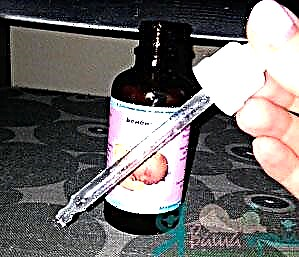In short, you need to choose the feeding method that is more convenient for you. If you want to know more, read our article.

Probably, every nursing mother faces a dilemma: to apply the baby to the breast strictly by the clock and develop a regime, or to allow the baby to eat when he wants to? Both options have advantages and disadvantages.
Feeding on demand
In this case, the baby is applied to the breast as soon as he begins to cry, demonstrate a sucking reflex, and show other signs of anxiety and hunger. Grandmothers still usually grumble at such mothers: "He whimpered a little, and you give him a breast right away!"
Yet this feeding method has many advantages:
- According to statistics, babies who are breastfed on demand are more balanced, calm, and confident in the future. Mom, after all, listens to the child, allowing him to fully satisfy his needs;
- This feeding option is an excellent prevention of milk stagnation, mastitis and other problems. All this is due to the timely emptying of the breast, despite the fact that milk is formed in exactly the volume that the child needs;
- When access to the breast is not limited, the sucking reflex of the baby is completely satisfied. Therefore, there is no need for a dummy, due to which problems with speech or improper bite formation are possible;
- When feeding on demand, a baby up to six months of age does not need water and complementary foods (unless the pediatrician has given other recommendations). Both the child receives with breast milk. "Front" milk is light and good thirst quencher. "Back" - nutritious, it saturates and provides the growing body with all the vitamins and microelements it needs. Just to get it, you need to suck for a long time;
- Feeding on demand allows you to establish lactation and continue to breastfeed your baby for as long as you want;
- Breastfeeding at night is most beneficial. During the night, the mammary glands produce the most prolactin, which results in a long and successful lactation (benefits of breastfeeding at night).
There are also disadvantages. They are expressed only in inconveniences for the mother, but these inconveniences are very significant:
- The baby can ask for breast 30 times a day, so you need to prepare for the fact that you will have to minimize your social life;
- It is extremely difficult for mom herself to plan something and observe some kind of regime. Everything in her life, even the ability to carry out a banal hygienic procedure, depends on whether the baby will tolerate or demand breast right now.
Feeding by the hour

In Russia, this method gained popularity in the post-war period. Women were then forced to return to work shortly after giving birth. Labor legislation at that time introduced mandatory breaks during which young mothers could feed their children. They took place every 3 hours and lasted up to 20 minutes. At night, the interval between feedings was increased to 6 hours.
The breastfeeding option by the hour is primarily convenient for mom:
- Having built a clear feeding schedule, you can go away on business and even work.
- When the baby gets used to the regime, the nights will become more or less calm.
There are still much more cons:
- Since feedings are infrequent at night, lactation can quickly fade away.
- It is impossible to explain to the baby why he is not put to the breast, and because of this, between feedings he cries and screams. Not every mother has enough nerves to withstand this.
- If the breast is not emptied on time, milk stagnation may occur, against which inflammation and mastitis often develop.
- When feeding by the clock, the sucking reflex is not satisfied. Therefore, the baby becomes in the habit of sucking his finger or fist.
- The appetite of the crumbs can increase and decrease depending on the time of day, so 20 minutes. it is not always enough for him to saturate. This is fraught with a lack of weight and a forced transition to mixtures.
[sc name = ”ads”]
If medically indicated, hourly feeding may be recommended by your doctor. For example, it allows you to avoid overeating, adjust the weight of the child and prevent obesity if he began to gain more than normal.
It is also recommended to feed according to the regimen when the baby is on IV. Formulas are highly nutritious, and the child may overeat, trying to satisfy not only the need for food, but also the sucking reflex. Pediatricians believe that feeding for 20 minutes. at intervals of 2.5-3 hours - the best way to dose the mixture so that the child does not eat too much and receives all the necessary substances for his growth and development.
- Which way of breastfeeding to choose - by mode (hours) or on demand?
- TOP-100 useful tips for a nursing mother
- Myths and realities of the life of a nursing woman



